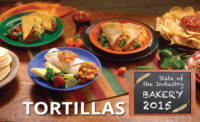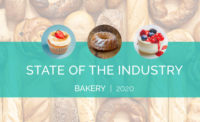The Bottom Line:
- Consumers expect continual innovation
- Dollar sales are up but unit sales are down somewhat
- An interest in healthy indulgence continues to motivate purchases
Some candies don’t fit neatly into one column or another. That’s okay; the “other” candies like marshmallows, spreads, interactive novelty items, and such seem to be fitting into consumers’ candy budgets just fine. Most of these miscellaneous categories have enjoyed healthy sales, despite the multiple challenges (inflation, supply chain interruptions, shifting consumer interests, and more). Producers chalk that up to a number of factors, including continued innovation by producers working in the space, as well as the average candy consumer’s continued interest in fun and indulgence.
Market data
Marshmallows are one confectionery subcategory that had a relatively tough year. Dollar sales were up a small tick, with the total category sales of $289.9 million constituting an increase of 6.9%; unit sales were down, but just 0.3% compared to the previous 12-month period (according to Circana OmniMarket). Kraft-owned Jet Puffed led the field, with sales of $169.8 million (up 8.8% compared to the previous year) giving the brand a healthy market share. One to watch: Dandies, a vegan marshmallow brand, saw sales reach $3.5 million for the period, up 19.5% compared to the previous year.
Carob/yogurt coated snacks also saw an increase in dollar sales with a drop in unit sales. The subcategory hit $131.7 million (up 7.6%) while unit sales slid by 2.3%. Brand leaders include Sun Maid ($52.6 million, up 12.9%) and PIM Brands ($16.6 million, up an impressive 39.3%). Private-label products in the subcategory suffered a drop in dollar sales, declining by 6.9% compared to the previous year to reach $26.8 million.
Another subcategory where “other” producers play is novelty non-chocolate. The category soared by 40% to reach $774.6 million.
Looking back
Jeff Greenwald, marketing manager for CandyRific, says his company and others operating in a similar space have faced challenges but regardless seen stronger sales over the past year, for a number of notable reasons.
“With the combination of price increases and inflation, units have been down a bit but overall, not by much. Seasonally, we have seen retailers cutting back on inventory but at the same time, we are seeing stronger sell-throughs. We have also seen that more variety seems to help the overall category. During the pandemic, many retailers cut back to the core SKU’s due to product availability. This seems to have passed and expansion into more items and categories is helping the overall confection category grow.”
The “carob/yogurt covered” subcategory has benefited from a combination of things—namely, consumers in several demographics exhibiting increased interest in healthier eating crossing with a continued desire for tasty treats.

“Millennial and Gen X parents are searching for the perfect snack to give their kids that provides a balance of high-quality ingredients and delicious taste,” remarks Mark Friedlander, associate director for consumer insights with PIM Brands, owner of Welch’s fruit snack line, including Fruit ‘n Yogurt. “They try to keep it simple. They’re on a busy schedule but still want to find the right, delicious snack for their kids. Gen-Z consumers are searching for a balanced life. General well-being is important, but at the same time, they want convenient and delicious snacks to treat themselves. They are always on the look-out for new, up-and-coming brands that will give them what they need.”
An issue confectionery producers have had to deal with, Greenwald notes, is the growing lean toward e-commerce.
“One challenge that continues is the movement towards online retailing, which is hurting brick and mortal sales and, in many cases, confection,” he says. “Confections is, at its core, primarily an impulse purchase. With less foot traffic we see less sales.”
Many CPG food categories have been hurting thanks to rising costs. However, Greenwald notes, consumers have continued to allow themselves and their family the occasional candy purchase, despite (or perhaps because of) the tough times.
“A parent cutting back with costs rising and finances getting tighter is more likely to purchase a $3- $5 treat for their child, since they have had to say ‘no’ to many other things,” he says. “Seasonally, we have seen the $8-$15 gifting category growing within confection, a direct correlation to the higher priced gift sales declining. More of less seems to be the new trend.”
Consumers will expect producers in the space to continue innovating, and delivering on a number of interests. Kevin Rennie, brand manager for marketing at PIM Brands, says the company has connected with consumers in that regard.
“PIM Brands, Inc. has been a leader in the fruit snacks category, and a pioneer in better-for-you snacking for years,” he says. “In response to shifting consumer preferences, PIM recently added new flavors and pack types to our line of Welch’s Fruit ‘n Yogurt snacks. New, on-trend flavors, including Blueberry-Acai and Mango-Peach, were added to address consumers’ ever-evolving flavor preferences and expand the line beyond our existing consumer favorite, Strawberry flavor variety. In addition, new, smaller-sized 1.8oz bags were added for on-the-go consumption.”
Rachel Pugh, marketing and communications manager for Sugar Plum Chocolates, says her company and others have continued to connect with consumers by offering products they can use to treat others, as well as themselves.
"Customers are still enjoying unique chocolates and gift boxes, something a little different that will bring a smile to someone’s face,” she says. “We pride ourselves in offering unique giftable items, so that’s a bright spot for us for sure.”
Looking forward
The past 12 months have been challenging and while things might continue slowly but steadily improving, producers might be wise to expect continued obstacles.
“We think that the challenge of inflation and costs will continue into the next year,” says Greenwald. “Seasonal sales will continue to evolve, and retailers look at more cost-conscious items. Supply chain seems to have remedied itself, but we are still monitoring availability of components and shipping.
Friedlander says as is the case with other confectionery and snack categories, producers in the space likely will benefit from the increase in snacking occasions among Americans.
“Overall, the trend toward all-day snacking continues to be on fire,” he predicts. “The number of people snacking, the number of snacks eaten throughout the day, and the growing number of snacking occasions has been increasing, driven by the Gen Z and millennial cohorts. This represents a permanent, paradigm shift in how people approach food and snacking. Due to the positive momentum around snacking, many of these categories have fared better during this inflationary period.”
Greenwald advises producers of novelty items and miscellaneous candies should expect to keep their offerings fresh if they expect success down the road.
“It’s all about innovation; unlike traditional confections, where repeat purchases are the norm, novelty must offer something new each time the consumer is at the shelf,” he says. “A new character, a new license, a new format—items with play value need to offer constant change. While a child won’t buy the same Matchbox car more than once, they will buy one of the many other cars offered each time they walk by that section. The same goes with novelty. They are looking for something new and different every time they visit the novelty set.”
Friedlander agrees that innovation is a likely key to success in the category, as long as such innovations deliver on what consumers are looking for in their candy and snack purchases.
“Innovation around new flavors and textures is boosting growth by driving interest and desire for new products and experiences,” he says. “As an outgrowth of the pandemic, consumers have increasingly been seeking indulgent snacks, and their shifting attitudes around health and wellness has led to a surge in better-for-you snacking as well. Even in inflationary times, a proactive approach to health means consumers will still be willing to pay a premium for products deemed better for you.”
Pugh adds that whatever challenges come toward candy producers, it will be enjoyable to watch what they come up with.“It’s an exciting time for the confectionary business,” she says. “There are so many interesting and fun flavors, packaging, and overall creative ideas."
NEW MISCELLANEOUS CANDY PRODUCTS on snackandbakery.com/candy-industry
Discover More New Products at snackandbakery.com/candy-products





